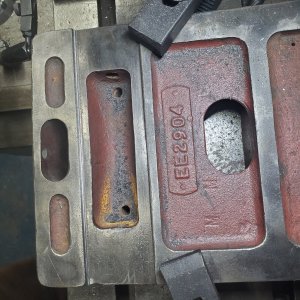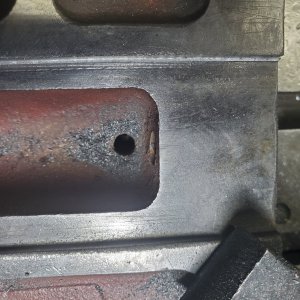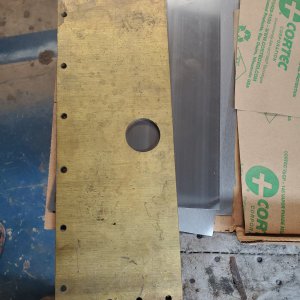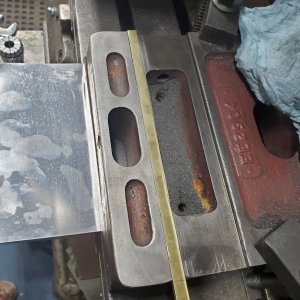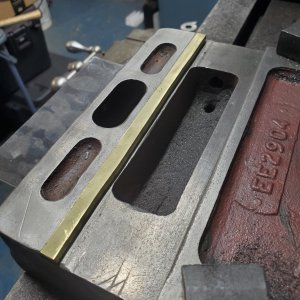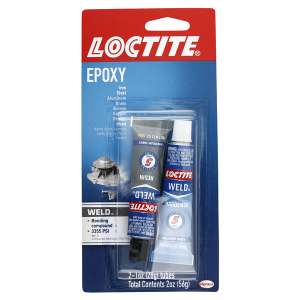I guess it is part of the learning process. You screw something up, so then you have to fix it, right??
I picked up a different base for my tailstock. One of the grooves didn't match up with the upper of the tailstock, it was around 0.040" too narrow. I had thought about pulling out my file, but wasn't sure I could keep the edge straight, so I thought it would be better to mill that little bit off.
I have an older Bridgeport mill with a M-head, but I figured it should do the job just fine. I spent a lot of time trying to make sure the base was lined up properly and everything was parallel as I was going to be cutting along the x-axis. When I was using the indicator attached to the head of the mill, I was indicating along the original edge and the readings seemed odd compared to how I could see the outside edge was sitting on the edge of the table, but I began thinking it was a cast item and the outside edge wasn't a machined surface so I couldn't go by the outside edge or how it looked. After checking and re-checking and repeat. I made the cut.
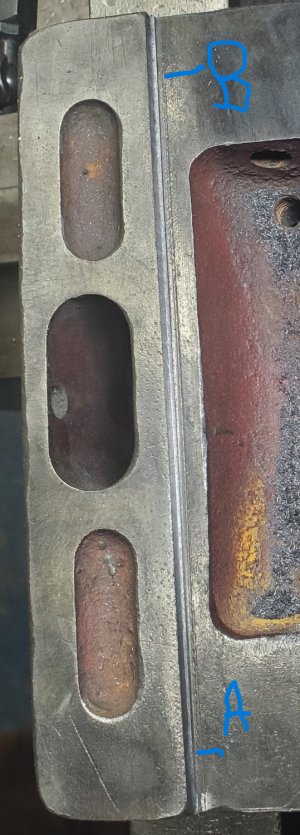
I don't know if you can see it, but the cut started at A and went to B. Unfortunately it went at an angle so I took too much off as I went towards the B end.
It's old cast iron. How do I fix it? I can't "add" cast iron obviously. My first thought was filling the area with some brazing, then machining it back to the correct measurement. Then I also thought about some sort of epoxy I could cut/file/sand to get the correct measurement. This part of the base is the front part of the tailstock, the part facing the headstock of the lathe, so the opposite side would be taking the majority of the horizontal force; trying to push the tailstock backward.
I don't know to be honest. I'm fairly new and have very little experience, thus this mistake. Any help or ideas would be appreciated.
Thanks,
Rick
I picked up a different base for my tailstock. One of the grooves didn't match up with the upper of the tailstock, it was around 0.040" too narrow. I had thought about pulling out my file, but wasn't sure I could keep the edge straight, so I thought it would be better to mill that little bit off.
I have an older Bridgeport mill with a M-head, but I figured it should do the job just fine. I spent a lot of time trying to make sure the base was lined up properly and everything was parallel as I was going to be cutting along the x-axis. When I was using the indicator attached to the head of the mill, I was indicating along the original edge and the readings seemed odd compared to how I could see the outside edge was sitting on the edge of the table, but I began thinking it was a cast item and the outside edge wasn't a machined surface so I couldn't go by the outside edge or how it looked. After checking and re-checking and repeat. I made the cut.

I don't know if you can see it, but the cut started at A and went to B. Unfortunately it went at an angle so I took too much off as I went towards the B end.
It's old cast iron. How do I fix it? I can't "add" cast iron obviously. My first thought was filling the area with some brazing, then machining it back to the correct measurement. Then I also thought about some sort of epoxy I could cut/file/sand to get the correct measurement. This part of the base is the front part of the tailstock, the part facing the headstock of the lathe, so the opposite side would be taking the majority of the horizontal force; trying to push the tailstock backward.
I don't know to be honest. I'm fairly new and have very little experience, thus this mistake. Any help or ideas would be appreciated.
Thanks,
Rick


